Your socks business sales rates are directly proportional to understanding your customers’ needs, and deepest wants!
And what is better than psychological for that matter?
Moody Socks Factory is taking you right now into a journey of discovering the reasoning and psychological process behind choosing certain clothes, and accordingly, socks!
Time to turn this anonymous ingredient into your business’ success spell!
WHAT WE WILL COVER IN OUR ENCLOTHED COGNITION ARTICLE
- What is Enclothed Cognition?
- The Psychology of Clothes: THE BIG WHY!
- The Metamorphosis of Colors.
- Tread on the Heels of FASHION
- WHICH Generation is Doing WHAT.
Marco Jacobs once said: “Clothes mean nothing until someone lives in them.” We have made some modifications to that.
“Socks mean nothing until someone lives in them.” —Moody Socks Factory
At the outset, let’s SCAN the term “enclothed cognition”!
Enclothed Cognition:
This term was coined by cognitive psychologists Hajo Adam and Adam Galinsky from Northwestern University. While they were examining the psychological and performance-related effects related to wearing particular items of clothing and their influence on the person wearing them, “enclothed cognition” came about as a description for this phenomenon. Enclothed cognition indicates that clothes have a huge systematic influence on the wearer’s psychological processes.
“It is only part of a larger field of research that examines how humans think with both their brains and their bodies, an area of study known as embodied cognition.”

HAJO ADAM

Adam Galinsky
Need proof for this concept?
Here are THREE:
In Hajo Adam and Adam Galinsky’s research, which was published in July 2012 in the Journal of Experimental Social Psychology , an attention-demanding task was implemented, disclosing the following:
- When wearing a white lab coat, the subject made half as many mistakes than they did without wearing the coat.
- On another attention task, those who were told that their lab coat was a doctor’s coat performed better than both those who were told it was a painter’s smock or those who merely saw a doctor’s coat on display.
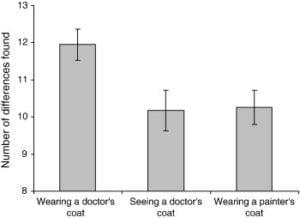
Also, it was shown that “wearing formal business attire increased abstract thinking.” That was according to a paper published back in August 2015, in Social Psychological and Personality Science, asking volunteers to change into formal or casual clothing before cognitive tests. The results of the paper suggested that the reason behind that is the “feelings of power.”
There are also the findings of Karla Keogan’s research: “The Relationship Between Clothing Preference, Self-Concepts, and Self-Esteem.”, which suggest that there is a definite relationship between clothing preference and self-concepts, and relationships, which also exists between clothing preference and proximity of clothing, defined as “a relational concept pertaining to the psychological closeness of clothing to self.”
Based on those 3 proofs and more, it’s undoubtedly true that designs and patterns have POWER over your consumers! Now, the trick is to flip this equation and be the one in power to cause the effect of clothes on consumers.
Can you imagine how this will powerfully affect your socks’ business?
The Psychology of Clothing: THE BIG WHY
Your curiosity as a business owner is what keeps you on track, and at Moody Socks Factory, we know well that you are searching for an answer for that BIG WHY! Why do people purchase and wear certain types of clothes, and accordingly, socks?
In early civilizations, the key purpose of clothing was to keep us warm and relatively dry. In the 21st century, we should be aware that protection is only one function of clothing (along with ideation, modesty, status, and adornment). This means that clothing allows people to be recognized as members of a specific group, covers the body in a proper way, shows position or rank within a group, and helps people express their uniqueness and creativity. You can definitely target these points through socks too!
“What you wear is how you present yourself to the world, especially today, when human contacts are so quick. Fashion is an instant language.” —Miuccia Prada
Veblen’s early theory of fashion consumption focused on the social status of clothing worn by women, which symbolized some of the core values of society. Clothing and fashion are often used to indicate and communicate social worth or status. Clothing also serves to communicate membership of a cultural group both to those who are members of it and those who are not. It is a social process that creates cultural meaning and is a fundamental part of our communication in social interactions. Clothing has been creatively described as the second skin and the visible self.
If clothes can, then socks can too! Just make sure that your socks design perfectly communicates the status that your buyer persona is striving to present.
The Metamorphosis of Colors:
Colors MATTER, do you wonder when?
The answer is ALWAYS!
Since as early as the Renaissance period, the color of clothing became more important. Certain colors were only to be worn by the upper classes and royals. Medieval Europeans developed sumptuary laws that allowed only the elite to wear costly colors such as purple, which was extracted from Mediterranean seashells.

The laws governed who could wear certain colors, the amount of color allowed, and when the color could be worn. Colors developed deep symbolic meanings, indicating the individuals’ cultural learning, place in the social hierarchy, and economic status.
And then came the famous colour wheel and its powerful psychological effect, created by the German poet, artist, and politician, Johann Wolfgang von Goethe, who published “Theory of Colors” in 1810’ his treatise on the nature, functions, and psychology of colors.
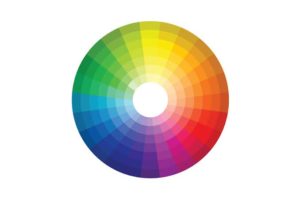
Here’s a preview of each color’s meaning:
1- RED:
Energy, passion, action, ambition, determination, and anger.
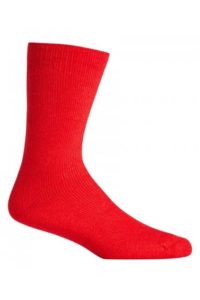
2- ORANGE:
Social communication and optimism.
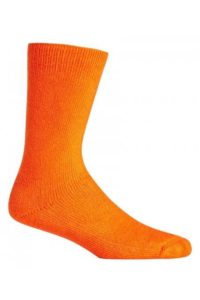
3- YELLOW:
Optimism and cheerfulness. It refers to the mind and the intellect.
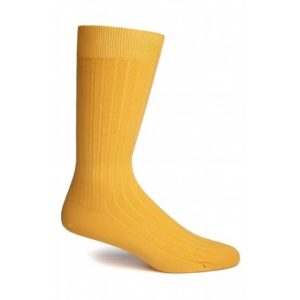
4- GREEN:
Balance and growth.
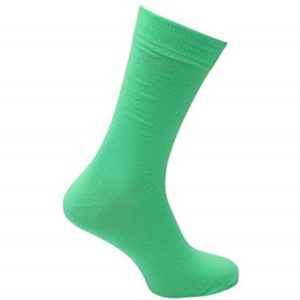
5- BLUE:
Trust and peace. It can also suggest loyalty and integrity.
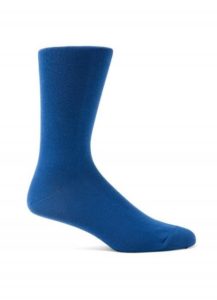
6- PURPLE:
Imagination and creativity.
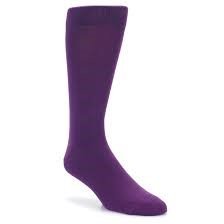
7- BROWN:
Security, protection, comfort, and and material wealth.
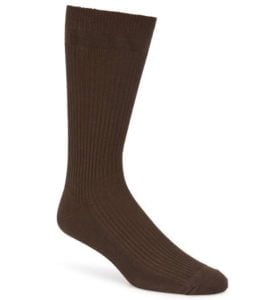
8- BLACK:
The color of the hidden, the secretive, and the unknown.
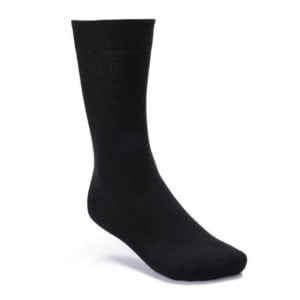
9- WHITE:
Perfection and purity.
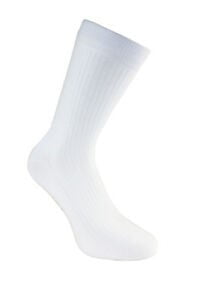
What is the power you want your socks customers to feel? Choose your socks colors accordingly!
SURPRISE: Gender also matters when it comes to color preferences!
In Hong Kong, a psychological dimensions experiment has been carried out on older men and women to monitor their choices in terms of fashion involvement, clothing needs, design preferences, and experiences when choosing clothing. It was found that older men had a significantly lower preference for certain eye-catching vibrant colors, but they welcomed subtle colors such as black, white, and blue. As for older women, they tended to look for multiple functions in fashion; they were not concerned with being noticeable, because they preferred red and warm colors over dull colors like black and white.
In further studies, it was proved that men were generally more tolerant toward achromatic colors than women. Accordingly, women might be more color-conscious and their color tastes are more flexible and diverse.
More recently, it was found that women were more likely than men to have a favorite color. Upon expression of their preferences for light versus dark colors, there were no significant differences between men and women. However, on expressing a preferred preference among bright and soft colors, a clear difference was reflected,, with women preferring soft colors and men preferring bright ones.
Back to some socks business existential questions, is it just a commercially repeated myth that people leave their personal reasons behind and follow fashion trends or NOT?
Tread on the Heels of FASHION:
There’s a distinct description of fashion presented through a significant study topic, which is: “FASHION TRENDS AND ITS IMPACT ON SOCIETY”. The definition is as follows:
“Fashion is just not an ambitious projected image of a reinterpreted good old value to fulfill some function or agenda alike but rather an evocative and refreshing concept worthy enough to be portrayed for society’s appreciation that makes us even more instinctive. In society, the individual’s appearance is the ticket to transmit non-verbal communication signals, such as possible cues about his / her social stature, values, and lifestyle.”
While we’ve found a solid ground to stand on by drawing a mutual perception of fashion, do people care about fashion DOs and DON’Ts while purchasing their clothes?
Based on the PriceGrabber® 2013 Fashion Trends Survey, 70% of survey respondents said it’s important for them to be fashionable and keep up with trends without breaking the bank. Although this is a clear confirmation of how consumers usually consider “their pockets” when deciding to purchase a product, it further gives an indication of their attachment to tracking where FASHION is going and following its steps.
Is it that simple?! ABSOLUTELY NOT!
A study on: “Consumers’ Adoption of Apparel Fashion: The Role of Innovativeness, Involvement, and Social Values,” presents a model that could fairly describe what affects the decision of going along with a specific fashion trend.
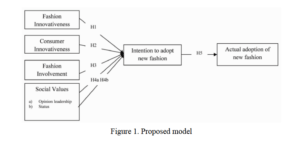
If so, what is the drive that creates the urge to go with the fashion flow?
When asked: “Why do people follow fashion trends?”, Rebecca Arnold, author of: “Fashion: A Very Short Introduction,” answered:
“It seems to be a contradictory mix of impulses and emotions. Desire and anxiety are at the heart of this. We’re drawn to the new and novel, to things that provide a feeling of change, and, perhaps, progress. We also want to belong – to be part of something recognizable – and there is no more obvious way to demonstrate this than through your clothes. A new outfit that fits with what magazines and advertisements are promoting can be really pleasurable to buy and wear. It can give you a new identity, even if it’s only for one night.”
This could be insightful to understand the psychological or emotional reasoning behind following fashion trends. It’s not a coincidence or passive behavior, IT’S SCIENCE!
WHICH Generation is Doing WHAT?
Everything is relative! And this applies when you look around to depict who, out of all your potential customers, is looking for that fashionable statement in your socks.
For example, according to “Share of French Following Fashion Trends 2017”, aiming to highlight the importance of fashion trends to French customers in 2017, 70% of respondents respondents said they did not attach any importance to this, compared to 1 percent of respondents seeking to always be fashionable.
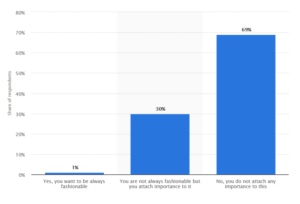
A further example is Kantar Worldpanel’s data, which shows that shows that “a massive 76% of spending on fashion in the UK comes from those who agree that they ‘purchase clothing regardless of fashion’.”
Imagine the wide gap between generations, how could it affect the adoption of fashion trends, especially in 2020?
Let’s state an essential fact: Gen Z will represent 40 percent of shoppers by 2020. This generation doesn’t take the fashion and retail norms at face value, so doing things the way things have always been done is a death sentence for retailers.
This is Gen Z on one hand, what about Gen X and Y on the other hand?

Generation X,those who were born from 1965 to 1980, would have a certain fashion taste related to what they’ve grown-up through. According to STATUS magazine it was the era of alternative rock music – so grunge looks and punk rock was everyone’s go-to style.
When it comes to Millennials or Generation Y, STATUS stated that: “a new trend that was made popular among millennials is the minimalist fashion. It’s basically the definition of “less is more” ,where millennials are decluttering their closets and upgrading them with a curated wardrobe in various shades of black, white, and grey.”
This essential knowledge is vital and consequential to working on your upcoming socks collections, time after time.
Right now, you’re aware of why watching over fashion trends is epoch-making on one hand, and that your target customers with their psychological reasons, have a say in what you should be manufacturing on the other hand.
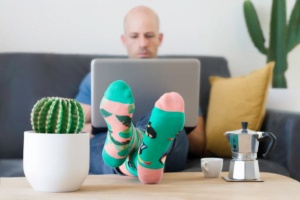

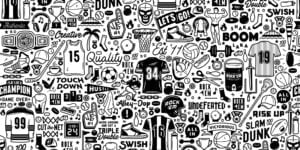
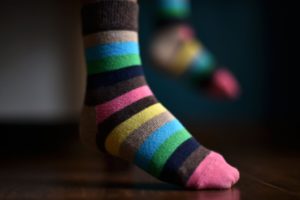
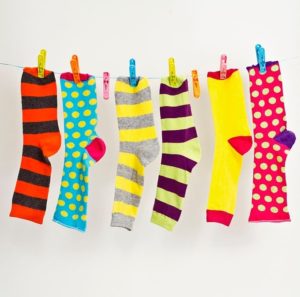
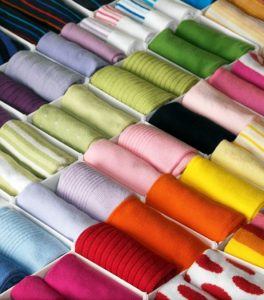
No comment yet, add your voice below!